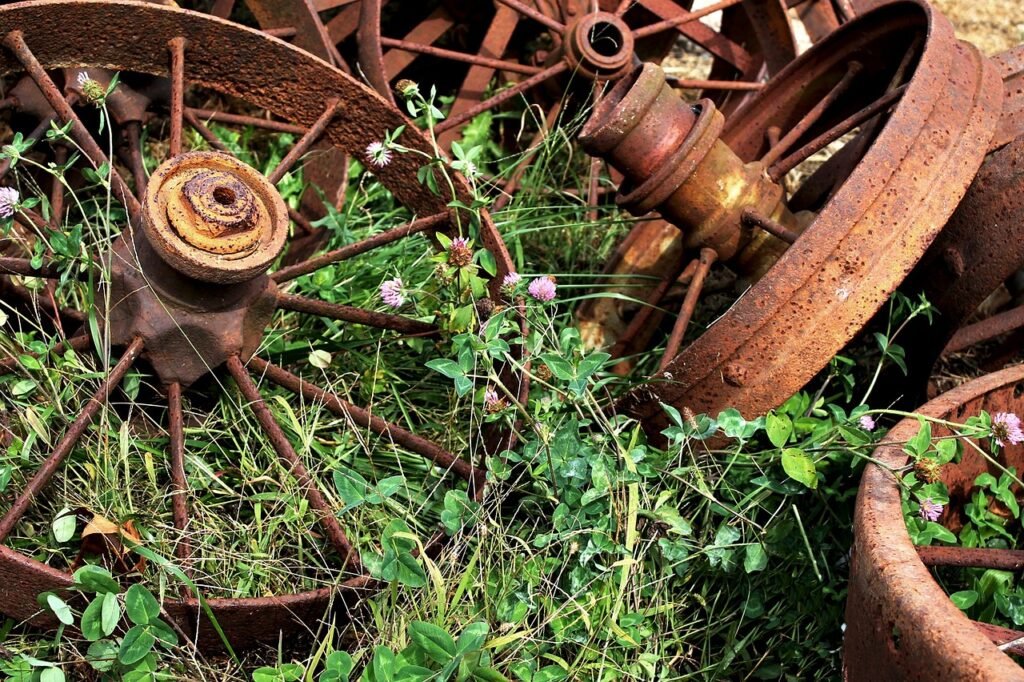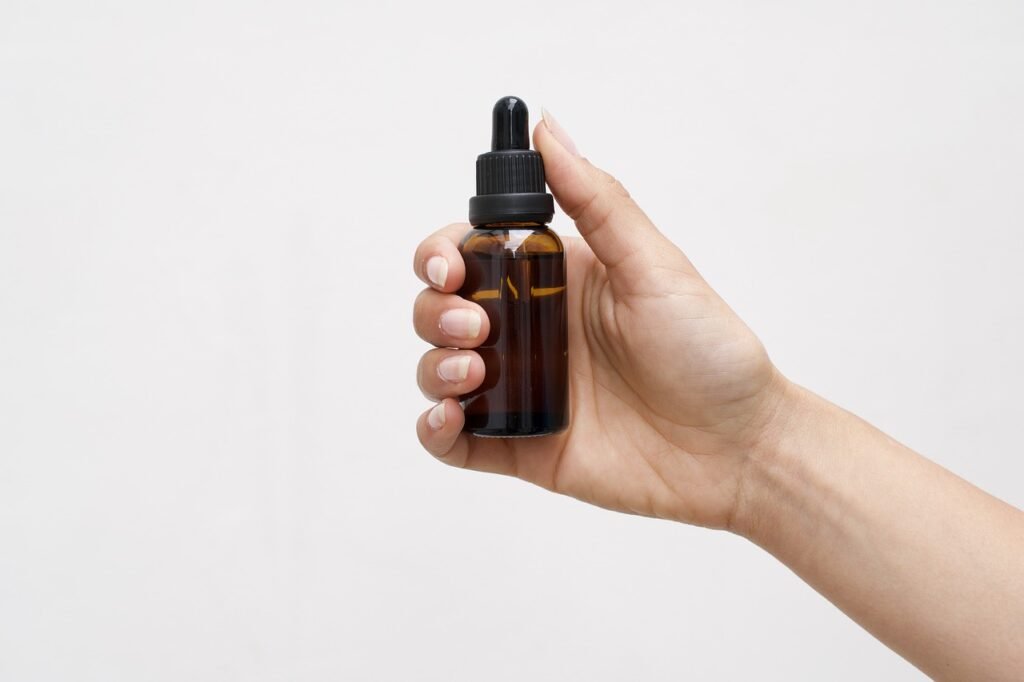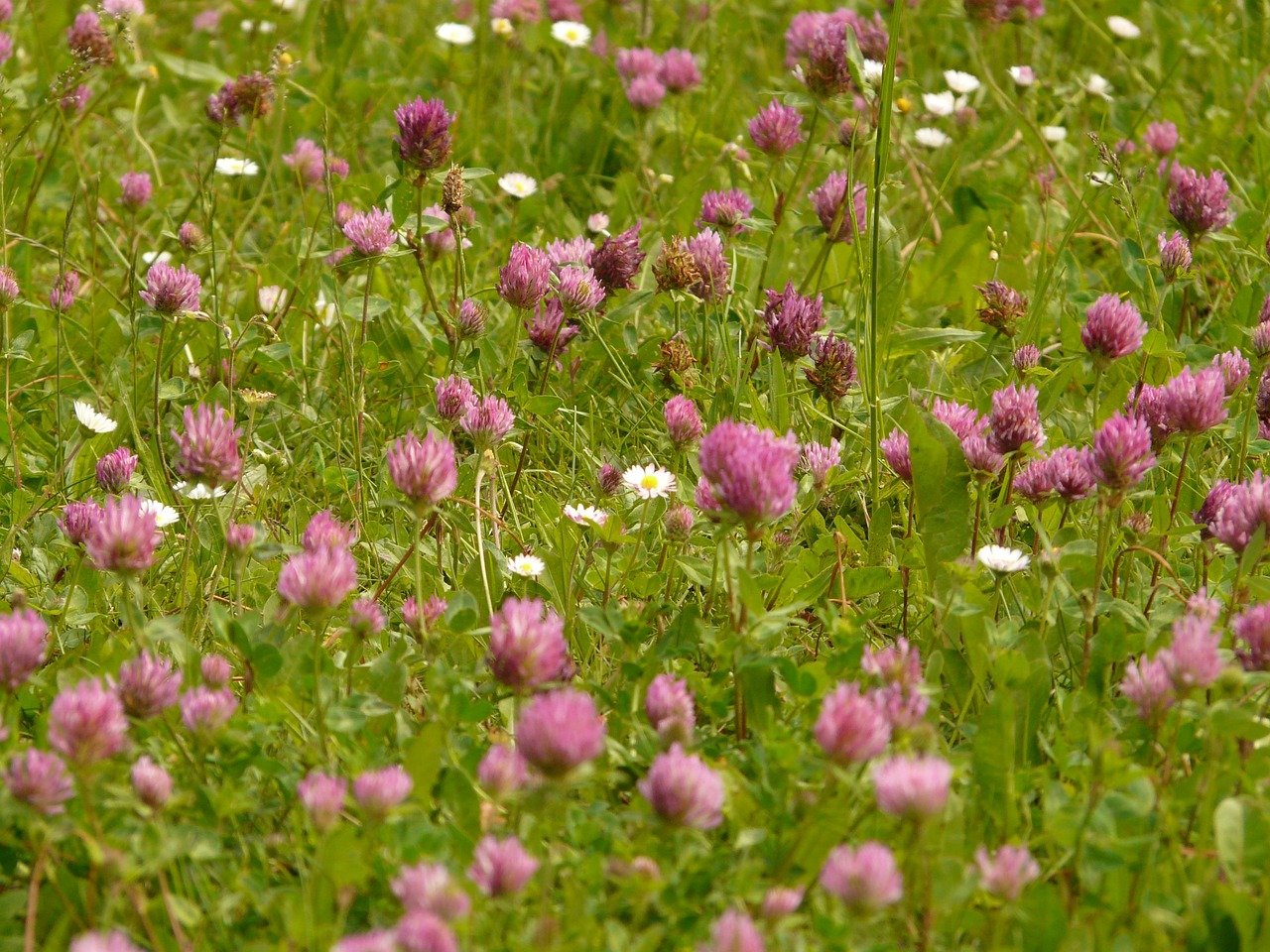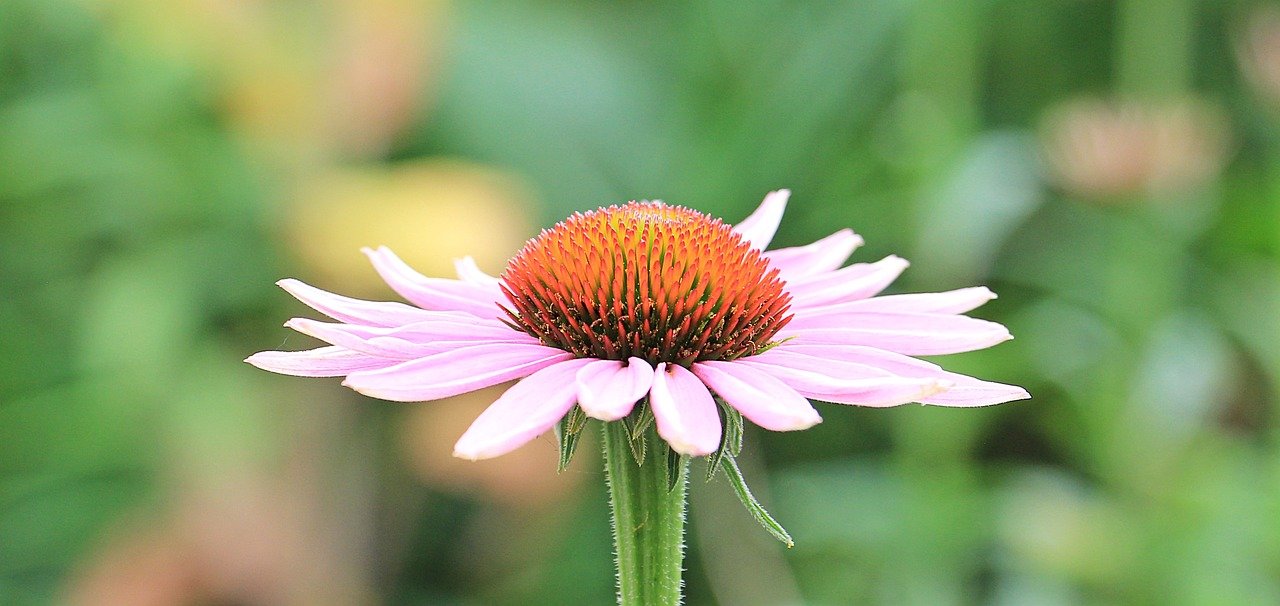
Red clover (Trifolium pratense) is a flowering plant that has been used for centuries in traditional medicine for its various health benefits. The medicinal properties of red clover are attributed to its rich content of phytochemicals, including isoflavones, flavonoids, and coumarins. Here are some of the traditional and potential medicinal uses of red clover:
- Menopausal Symptoms: Red clover is perhaps best known for its use in alleviating symptoms associated with menopause, such as hot flashes, night sweats, and mood swings. This is due to its high concentration of isoflavones, particularly genistein and daidzein, which have estrogen-like effects and may help balance hormone levels in menopausal women.
- Bone Health: The isoflavones found in red clover have also been studied for their potential benefits in supporting bone health and preventing osteoporosis. Some research suggests that these compounds may help slow bone loss and improve bone density, especially in postmenopausal women.
- Cardiovascular Health: Red clover contains compounds with antioxidant and anti-inflammatory properties that may contribute to cardiovascular health. Some studies have suggested that red clover may help lower cholesterol levels, improve blood flow, and reduce the risk of heart disease.
- Skin Conditions: Red clover extracts have been used topically to soothe skin irritations and conditions such as eczema, psoriasis, and rashes. The anti-inflammatory and antioxidant properties of red clover may help calm inflammation and promote healing when applied to the skin.
- Coughs and Respiratory Conditions: In traditional herbal medicine, red clover has been used to relieve coughs and respiratory congestion. It is believed to have expectorant properties that help loosen phlegm and mucus, making it easier to expel from the lungs.
- Cancer Prevention: Some research suggests that the isoflavones found in red clover may have anticancer properties and could potentially help reduce the risk of certain cancers, including breast and prostate cancer. However, more studies are needed to confirm these effects.
- Detoxification: Red clover is sometimes used as a component of herbal detoxification programs due to its purported ability to support liver function and aid in the elimination of toxins from the body.
- Urinary Tract Health: Red clover has diuretic properties, meaning it may help increase urine production and promote the flushing of toxins from the urinary tract. It has been used traditionally to support urinary health and prevent urinary tract infections.
It’s important to note that while red clover has a long history of use in traditional medicine and is generally considered safe for most people when used in moderation, it may interact with certain medications or have contraindications for individuals with certain medical conditions. As with any herbal remedy, it’s advisable to consult with a healthcare professional before using red clover, especially if you are pregnant, breastfeeding, or taking medications.

Research on the Medicinal Properties of Red Clover
Anti-Inflammatory and Antioxidant Effects of Anthocyanins of Trifolium pratense (Red Clover) in Lipopolysaccharide-Stimulated RAW-267.4 Macrophages Lee SG, Brownmiller CR, Lee SO, Kang HW. Anti-Inflammatory and Antioxidant Effects of Anthocyanins of Trifolium pratense (Red Clover) in Lipopolysaccharide-Stimulated RAW-267.4 Macrophages. Nutrients. 2020;12(4):1089. Published 2020 Apr 15. doi:10.3390/nu12041089
The effect of red clover isoflavones on menopausal symptoms, lipids and vaginal cytology in menopausal women: a randomized, double-blind, placebo-controlled study Hidalgo LA, Chedraui PA, Morocho N, Ross S, San Miguel G. The effect of red clover isoflavones on menopausal symptoms, lipids and vaginal cytology in menopausal women: a randomized, double-blind, placebo-controlled study. Gynecol Endocrinol. 2005;21(5):257-264. doi:10.1080/09513590500361192
Pharmacological and therapeutic properties of the Red Clover (Trifolium pratense L.): an overview of the new finding Mohsen A, Fatemeh K, Leila N, Mona P, Mohammad Z, Mozafar K. Pharmacological and therapeutic properties of the Red Clover (Trifolium pratense L.): an overview of the new finding. J Tradit Chin Med. 2021;41(4):642-649. doi:10.19852/j.cnki.jtcm.20210324.001

Making a Tincture of Red Clover
Making a tincture of red clover is a straightforward process that involves extracting the medicinal compounds from the plant material using alcohol. Red clover (Trifolium pratense) is known for its potential health benefits, including its use as a traditional remedy for skin conditions, menopausal symptoms, and respiratory issues. Here’s a step-by-step guide to making a red clover tincture:
Ingredients and Supplies:
- Dried red clover blossoms or fresh red clover blossoms
- High-proof alcohol (such as vodka or Everclear)
- Clean glass jar with a tight-fitting lid
- Cheesecloth or fine mesh strainer
- Amber glass dropper bottles for storing the tincture
- Labels and marker for labeling
Instructions:
Prepare the Red Clover Blossoms:
- If using fresh red clover blossoms, harvest them when they are in full bloom. Remove any dirt or debris and gently rinse the blossoms under cool water. Allow them to air dry thoroughly.
- If using dried red clover blossoms, ensure they are clean and free of contaminants.
Fill the Glass Jar:
- Place the red clover blossoms in the clean glass jar. You can loosely pack the jar with blossoms, filling it about halfway to two-thirds full. Ensure there is enough space for the alcohol to cover the plant material completely.
Add Alcohol:
- Pour the high-proof alcohol over the red clover blossoms in the jar, covering them completely. Use enough alcohol to ensure that the plant material is fully submerged. The alcohol acts as a solvent, extracting the beneficial compounds from the red clover.
Seal and Store the Jar:
- Seal the jar tightly with the lid to prevent evaporation and contamination. Store the jar in a cool, dark place away from direct sunlight. Allow the red clover and alcohol mixture to steep for about 4 to 6 weeks. During this time, gently shake the jar every few days to agitate the contents and facilitate extraction.
Strain the Tincture:
- After 4 to 6 weeks, strain the tincture to separate the liquid extract from the plant material. Place a piece of cheesecloth or a fine mesh strainer over a clean glass bowl or measuring cup. Pour the tincture through the cheesecloth or strainer to remove the solid plant material, pressing gently to extract as much liquid as possible.
Bottle and Label the Tincture:
- Transfer the strained tincture into amber glass dropper bottles for storage. Amber glass helps protect the tincture from light exposure, which can degrade its potency over time. Seal the bottles tightly with their caps.
- Label the bottles with the name of the tincture (Red Clover Tincture), the date it was made, and any other relevant information, such as the alcohol percentage or dosage instructions.
Store the Tincture:
- Store the labeled tincture bottles in a cool, dark place away from heat and sunlight. Properly stored, the tincture can maintain its potency for several months to a year.
Dosage and Usage:
- The dosage of red clover tincture can vary depending on factors such as the individual’s age, weight, and health condition. It’s best to consult with a healthcare professional or herbalist for personalized dosage recommendations.
- Red clover tincture can be taken orally by adding the desired amount (usually a few drops to a teaspoon) to water, juice, or tea. It can also be applied topically to the skin for certain conditions, although dilution may be necessary.
By following these steps, you can create your own red clover tincture to harness the potential health benefits of this herbal remedy.
The medicinal properties of red clover are well established as are the healing powers of Echinacea. Check that out here.

